Nile Monitor Lizard
- March 8, 2024
- 0 comment
The Nile Monitor Lizard, scientifically known as Varanus niloticus, is a fascinating reptile native to the African continent. Renowned for its impressive size, agility, and sharp intelligence, this apex predator dominates the ecosystems it inhabits. With adult specimens typically reaching lengths of 4 to 6 feet and weighing between 15 to 30 pounds, Nile Monitors are robust creatures equipped with muscular bodies and strong limbs. Their skin is adorned with striking patterns and colors, featuring shades of yellow, green, brown, and black, allowing them to blend seamlessly with their surroundings for effective camouflage.
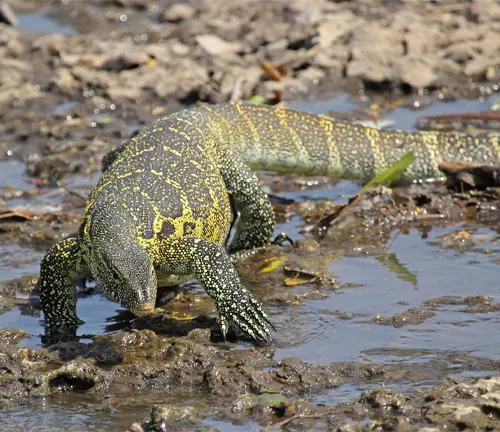
Nile Monitor Lizards are highly adaptable and can thrive in various environments, including savannas, forests, wetlands, and urban areas, often found near water sources such as rivers, lakes, and marshes. As diurnal creatures, they are most active during the day, displaying impressive climbing and swimming abilities. Their diet is diverse, consisting of small mammals, birds, reptiles, fish, insects, and carrion, making them formidable hunters. During the breeding season, males engage in elaborate courtship displays to attract females, leading to the nesting and hatching of eggs in shallow nests near water bodies.
Despite their beneficial role in controlling pest populations, Nile Monitor Lizards can pose risks to humans and ecosystems, especially when introduced as invasive species outside their native range. Understanding their biology, behavior, and ecological significance is essential for ensuring their conservation and coexistence with humans.
| Specification | Description |
|---|---|
| Scientific Name | Varanus niloticus |
| Average Length | 4 to 6 feet |
| Maximum Length | Up to 7 feet |
| Average Weight | 15 to 30 pounds |
| Maximum Weight | Over 40 pounds |
| Habitat | Sub-Saharan Africa |
| Diet | Small mammals, birds, reptiles, fish, insects, carrion |
| Activity Patterns | Diurnal (active during the day) |
| Camouflage | Striking patterns and colors for effective concealment |
| Adaptability | Thrives in various environments, including savannas, forests, wetlands, and urban areas |
| Reproduction | Mating season during the rainy season, with females laying eggs in shallow nests near water bodies |
| Threats | Habitat loss, poaching, persecution, and potential as an invasive species outside native range |
| Conservation Status | Not currently endangered, but populations declining in some areas |
| Legal Status (as pets) | Regulations vary by location |
Exploring the Fascinating World of Africa’s Apex Predator
Nile Monitor Lizards, scientifically known as Varanus niloticus, are among the most intriguing reptiles found in Africa. Renowned for their impressive size, agility, and sharp intelligence, these creatures dominate the ecosystems they inhabit. Let’s delve into the world of Nile Monitor Lizards to understand their physical characteristics, behavior, habitat, and their complex relationship with humans.
Physical Description
Size and Weight
Nile Monitor Lizards are known for their impressive size and strength. On average, adult Nile Monitors measure between 4 to 6 feet in length, although some individuals can grow up to 7 feet long. As for their weight, these lizards typically range from 15 to 30 pounds, with larger specimens weighing over 40 pounds. Their robust bodies and muscular limbs enable them to move swiftly both on land and in water.
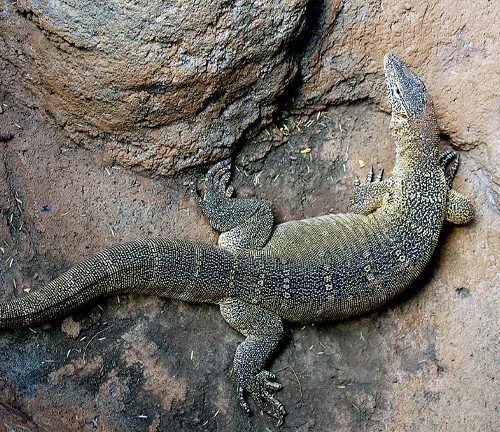
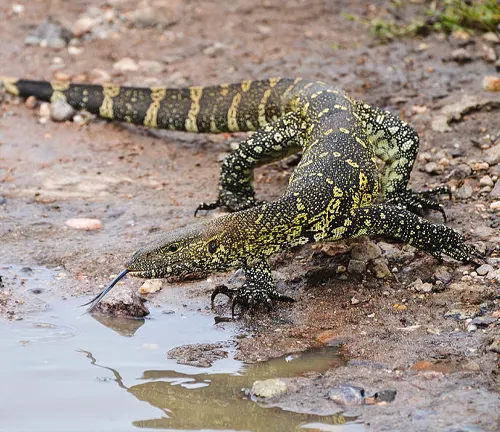
Coloration and Patterns
One of the most striking features of Nile Monitor Lizards is their vibrant coloration and distinctive patterns. Their skin is adorned with hues of yellow, green, brown, and black, arranged in intricate patterns of bands, spots, and stripes. These colors serve as excellent camouflage, allowing Nile Monitors to blend seamlessly into their natural habitats. The patterns on their skin also help them to break up their silhouette, making them less visible to potential predators and prey alike. Overall, their coloration and patterns contribute to their overall beauty and effectiveness as apex predators in their ecosystems.
Habitat and Distribution
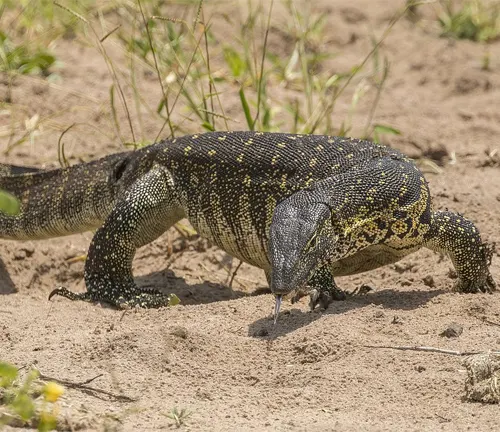

Nile Monitor Lizards are primarily found in sub-Saharan Africa, where they inhabit a diverse range of ecosystems. They are highly adaptable reptiles and can thrive in various habitats, including savannas, forests, wetlands, and even urban areas. However, they are most commonly associated with habitats near water sources such as rivers, lakes, swamps, and marshes.
In their natural habitat, Nile Monitors can be observed basking on rocks or tree branches near water bodies, or swimming gracefully through rivers and streams. They are equally at home on land and in water, displaying remarkable agility and adeptness in both environments.
Due to their adaptability, Nile Monitor Lizards have a wide distribution across Africa, ranging from Senegal and Guinea in the west to Sudan and Ethiopia in the east, and southward to South Africa. They can also be found on various islands, including Madagascar and the Comoros.
Behavior and Diet
Activity Patterns
Nile Monitor Lizards are diurnal creatures, meaning they are most active during the day. They are known for their impressive agility and can often be observed basking in the sun to regulate their body temperature. These reptiles are equally comfortable on land and in water, displaying remarkable climbing and swimming abilities. Nile Monitors are skilled hunters, using their keen senses of sight and smell to locate prey. They are also adept runners and can move quickly when pursuing prey or evading predators. Despite their primarily diurnal nature, Nile Monitor Lizards may also be active during the early morning or late afternoon hours, particularly in hot climates where they may seek refuge from the midday heat.
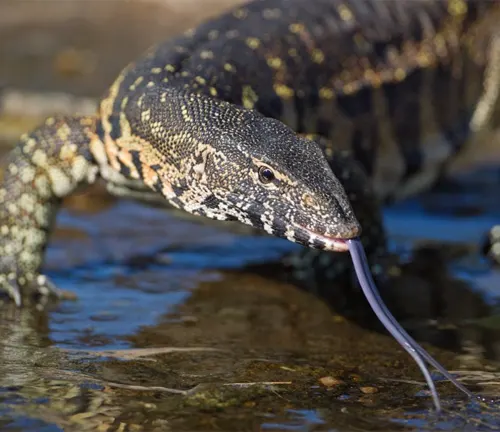
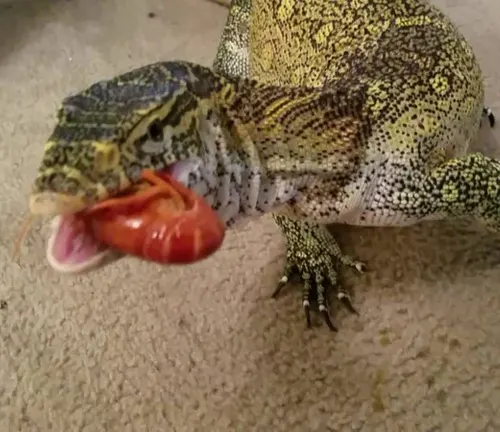
Feeding Habits
As opportunistic predators, Nile Monitor Lizards have a varied diet consisting of small mammals, birds, reptiles, fish, insects, and carrion. They are skilled hunters and use a combination of stealth, speed, and strength to capture their prey. Nile Monitors are known to ambush unsuspecting prey near water bodies or actively hunt for food on land. With powerful jaws and sharp teeth, they can easily overpower and consume prey much larger than themselves. Nile Monitor Lizards are also proficient scavengers and will readily feed on carcasses or carrion when the opportunity arises. Their diverse feeding habits contribute to their success as apex predators in their ecosystems, allowing them to exploit a wide range of food sources for sustenance.
Reproduction
Mating Behavior
During the breeding season, Nile Monitor Lizards exhibit elaborate mating behaviors as part of their reproductive process. Male Nile Monitors compete for mating opportunities with females, often engaging in aggressive displays to establish dominance and secure a mate. These displays may include head bobbing, tail flicking, and physical combat with rival males. Once a male successfully courts a female, mating occurs, typically taking place near water bodies where Nile Monitors are commonly found. The mating process is relatively brief but crucial for ensuring successful reproduction and the continuation of the species.
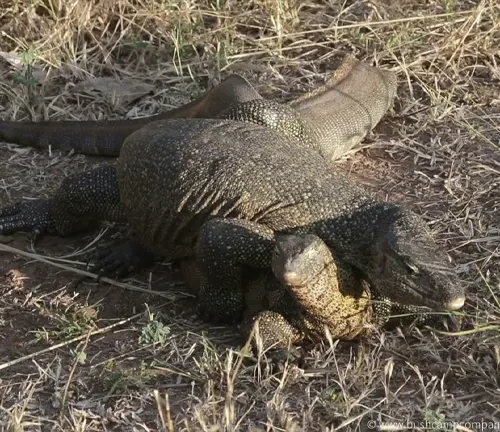

Nesting and Hatching
After mating, female Nile Monitor Lizards search for suitable nesting sites to lay their eggs. They typically prefer areas with loose soil or sand, such as riverbanks or sandy beaches, where they can dig shallow nests to deposit their eggs. The nesting process is meticulously carried out by the female, who carefully excavates a hole and deposits a clutch of eggs, which can range in number from a few to over two dozen, depending on the size and age of the female. Once the eggs are laid, the female covers them with soil or vegetation to provide protection and concealment from predators.
Interaction with Humans
Nile Monitor Lizards have a complex relationship with humans, often regarded as both beneficial and problematic. While they play a crucial role in controlling pest populations and maintaining ecosystem balance, they can also pose risks to human safety and livelihoods.
Conservation Status
The conservation status of Nile Monitor Lizards varies depending on their geographical location and the specific threats they face in their habitats. While Nile Monitor Lizards are not currently classified as endangered species, they may be vulnerable to various threats, including habitat loss, poaching, and persecution by humans.
In some regions, Nile Monitors are subjected to habitat destruction due to urbanization, agriculture, and deforestation, which can fragment their populations and reduce available resources. Additionally, they may face persecution by humans due to misconceptions about their behavior and potential threats to livestock or property.
Captivity as Pets
Nile Monitor Lizards are occasionally kept as pets by reptile enthusiasts, although they are not recommended for inexperienced owners due to their large size, aggressive tendencies, and specific care requirements. Captive Nile Monitors require spacious enclosures with ample room for climbing, swimming, and basking, as well as appropriate temperature and humidity levels to mimic their natural habitat.
Providing a varied diet consisting of whole prey items such as rodents, insects, fish, and occasionally small birds is essential for the health and well-being of captive Nile Monitor Lizards. Additionally, regular handling and interaction with their owners can help to socialize these reptiles and reduce aggressive behavior.
Management and Control Measures
Addressing the presence of invasive Nile Monitor Lizards requires comprehensive management and control measures aimed at mitigating their impact on native ecosystems and human communities. Some of the strategies commonly employed include:
- Surveillance and Monitoring: Regular monitoring of Nile Monitor populations is essential for assessing their distribution, abundance, and impact on native wildlife. This information helps inform management decisions and prioritize areas for intervention.
- Trapping and Removal Programs: Trapping and removal efforts can help reduce invasive Nile Monitor populations in areas where they pose significant threats. Traps are strategically placed in locations frequented by Nile Monitors, and captured individuals are safely removed and relocated to minimize their impact on native ecosystems.
- Public Education and Outreach: Educating the public about the risks associated with invasive Nile Monitor Lizards can help raise awareness and encourage responsible behaviors. Outreach efforts may include informational campaigns, workshops, and community engagement activities aimed at promoting coexistence and minimizing human-wildlife conflicts.
- Regulation and Enforcement: Implementing stricter regulations on the import, sale, and ownership of Nile Monitor Lizards can help prevent further introductions and limit their spread. Enforcement of existing regulations is crucial for ensuring compliance and deterring illegal activities related to invasive species.
- Habitat Restoration: Restoring and enhancing native habitats can help support the recovery of native wildlife populations and reduce the vulnerability of ecosystems to invasive species. Habitat restoration efforts may include revegetation, erosion control, and invasive species removal to create more resilient ecosystems.
- Research and Monitoring: Continued research into the ecology, behavior, and impacts of invasive Nile Monitor Lizards is essential for developing effective management strategies. Monitoring the effectiveness of control measures and adapting management plans based on new information and insights are critical for long-term success.
Different Species
Savannah Monitor
(Varanus exanthematicus)
Native to sub-Saharan Africa, the Savannah Monitor is a popular species in the pet trade. It has a distinctive banded pattern on its skin and is known for its relatively docile temperament compared to other monitor species.
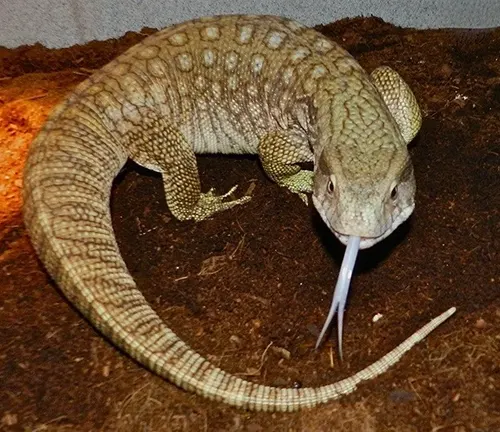
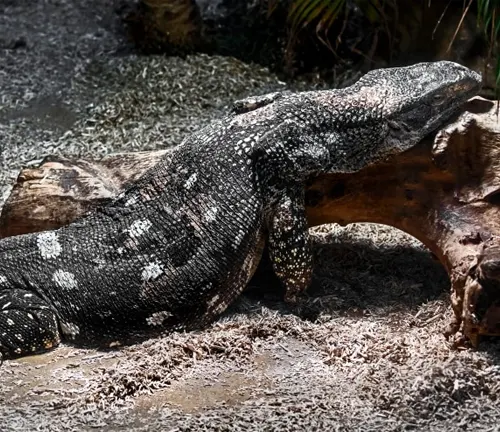
Black-throated Monitor
(Varanus albigularis albigularis)
Found in southern Africa, the Black-throated Monitor is characterized by its black throat and prominent dorsal crest. It inhabits a variety of habitats, including savannas, woodlands, and rocky areas.
Water Monitor
(Varanus salvator)
Also known as the Asian Water Monitor, this species is widespread throughout Southeast Asia. It is one of the largest monitor lizards, with individuals reaching lengths of over 8 feet. Water Monitors are excellent swimmers and often inhabit mangrove forests, rivers, and wetlands.
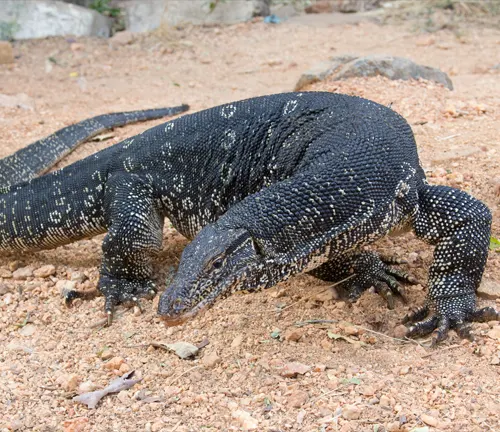
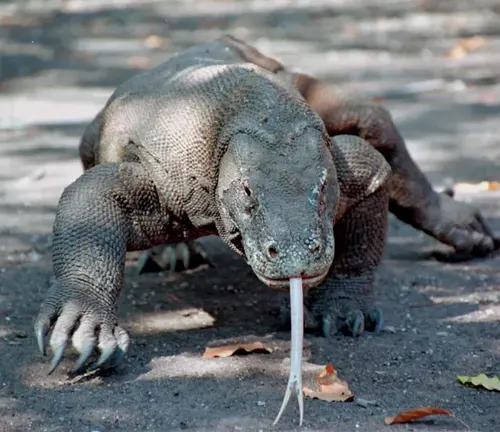
Komodo Dragon
(Varanus komodoensis)
Endemic to the Indonesian islands of Komodo, Rinca, Flores, and Gili Motang, the Komodo Dragon is the largest living lizard species. It is a formidable apex predator, capable of taking down large prey such as deer and water buffalo.
Spiny-tailed Monitor
(Varanus acanthurus)
Native to Australia, the Spiny-tailed Monitor is named for the sharp spines along its tail. It inhabits arid regions and is known for its exceptional digging abilities, creating complex burrow systems for shelter.
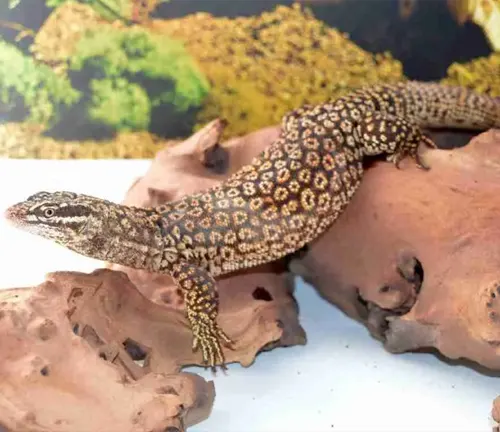
Frequently Asked Questions (FAQs)
- Are Nile Monitor Lizards venomous?
No, Nile Monitor Lizards are not venomous. They rely on their physical strength and sharp teeth to capture and subdue prey. - How long do Nile Monitor Lizards live?
In the wild, Nile Monitor Lizards typically live for around 10 to 15 years. However, in captivity, they can live significantly longer with proper care, sometimes reaching up to 20 years or more. - What type of habitat do Nile Monitor Lizards prefer?
Nile Monitor Lizards are highly adaptable and can inhabit various ecosystems, including savannas, forests, wetlands, and urban areas. They are commonly found near water sources such as rivers, lakes, and marshes. - Do Nile Monitor Lizards hibernate?
No, Nile Monitor Lizards do not hibernate. They are active year-round, although their activity levels may decrease during cooler temperatures. - How can I tell the gender of a Nile Monitor Lizard?
Determining the gender of Nile Monitor Lizards can be challenging, especially in juveniles. However, adult males are typically larger and have broader heads and thicker necks compared to females. - Do Nile Monitor Lizards make vocalizations?
Yes, Nile Monitor Lizards are known to make hissing and grunting sounds when threatened or during aggressive displays. These vocalizations serve as warnings to potential predators or rivals. - Can Nile Monitor Lizards swim?
Yes, Nile Monitor Lizards are excellent swimmers and are often found in or near water sources. They use their strong limbs and powerful tails to propel themselves through the water with ease. - Do Nile Monitor Lizards have predators?
While Nile Monitor Lizards are apex predators in their ecosystems, they may still face predation from larger carnivores such as crocodiles, large snakes, and birds of prey. - Are Nile Monitor Lizards territorial?
Yes, Nile Monitor Lizards can be territorial, especially during the breeding season when males compete for mates. They may also defend hunting territories or nesting sites from other individuals. - Can Nile Monitor Lizards regenerate lost limbs?
No, Nile Monitor Lizards cannot regenerate lost limbs like some other reptiles. However, they are resilient animals capable of healing from injuries with proper care.


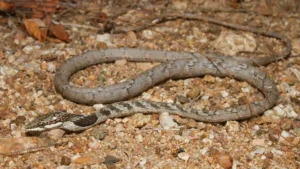

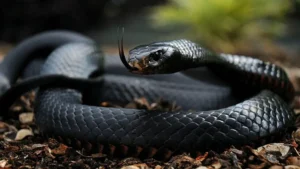

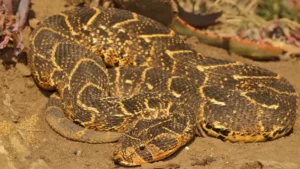
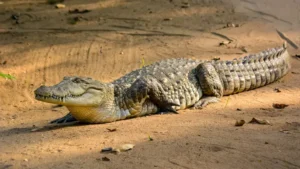
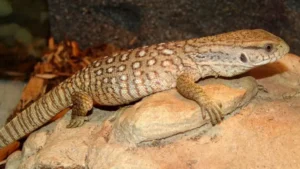

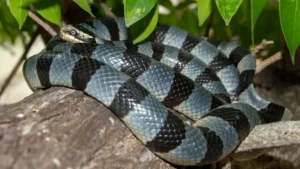
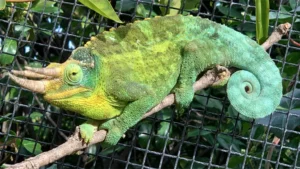
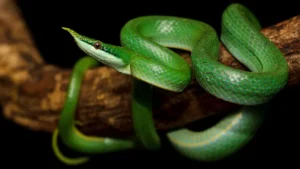

Leave your comment